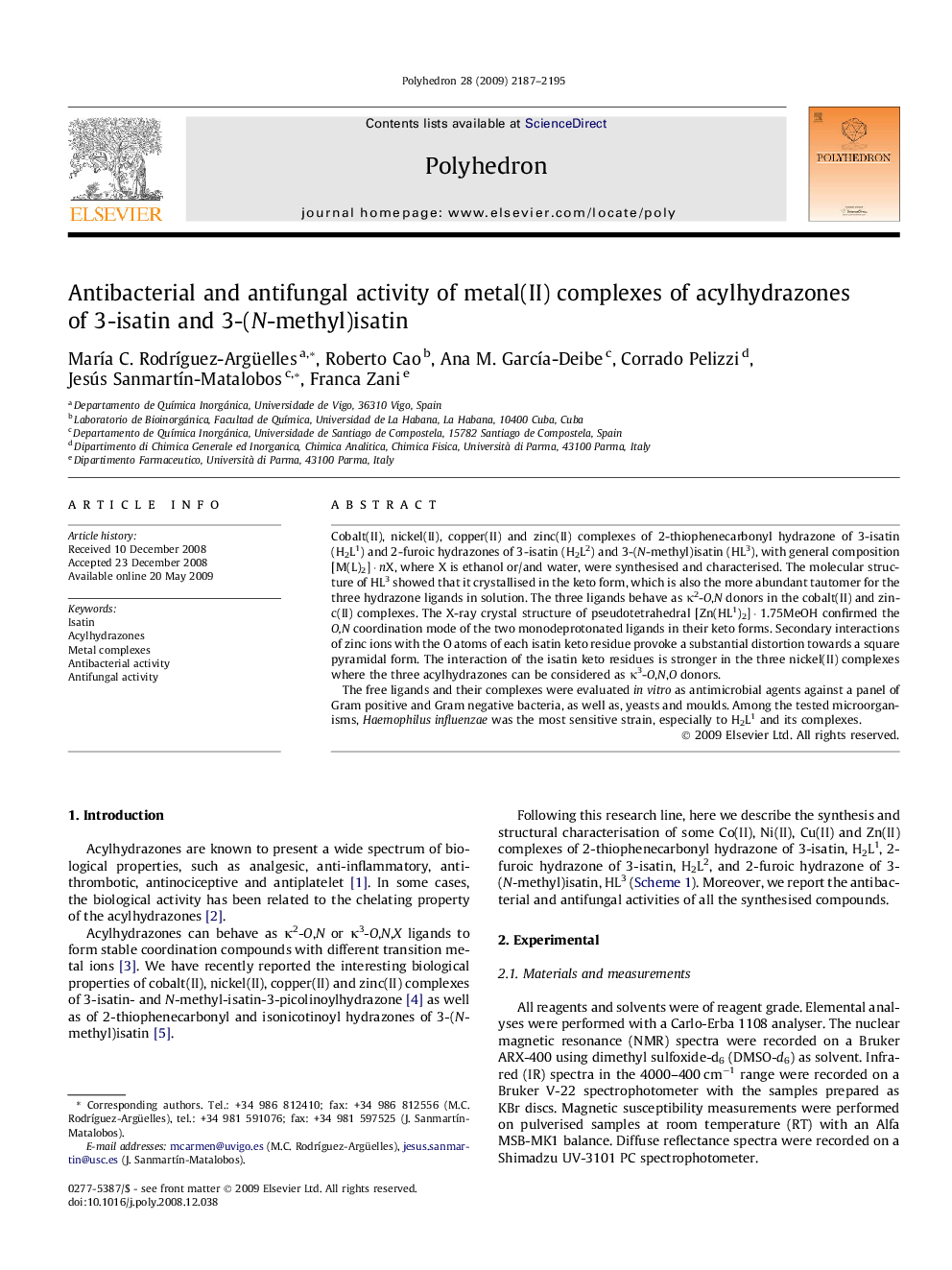| Article ID | Journal | Published Year | Pages | File Type |
|---|---|---|---|---|
| 1334949 | Polyhedron | 2009 | 9 Pages |
Cobalt(II), nickel(II), copper(II) and zinc(II) complexes of 2-thiophenecarbonyl hydrazone of 3-isatin (H2L1) and 2-furoic hydrazones of 3-isatin (H2L2) and 3-(N-methyl)isatin (HL3), with general composition [M(L)2] · nX, where X is ethanol or/and water, were synthesised and characterised. The molecular structure of HL3 showed that it crystallised in the keto form, which is also the more abundant tautomer for the three hydrazone ligands in solution. The three ligands behave as κ2-O,N donors in the cobalt(II) and zinc(II) complexes. The X-ray crystal structure of pseudotetrahedral [Zn(HL1)2] · 1.75MeOH confirmed the O,N coordination mode of the two monodeprotonated ligands in their keto forms. Secondary interactions of zinc ions with the O atoms of each isatin keto residue provoke a substantial distortion towards a square pyramidal form. The interaction of the isatin keto residues is stronger in the three nickel(II) complexes where the three acylhydrazones can be considered as κ3-O,N,O donors.The free ligands and their complexes were evaluated in vitro as antimicrobial agents against a panel of Gram positive and Gram negative bacteria, as well as, yeasts and moulds. Among the tested microorganisms, Haemophilus influenzae was the most sensitive strain, especially to H2L1 and its complexes.
Graphical abstractThree new acylhydrazone ligands and their Co(II), Ni(II), Cu(II) and Zn(II) complexes, were synthesised, characterised and evaluated in vitro as antimicrobial agents against a panel of Gram positive and Gram negative bacteria, as well as yeasts and moulds.Figure optionsDownload full-size imageDownload as PowerPoint slide
